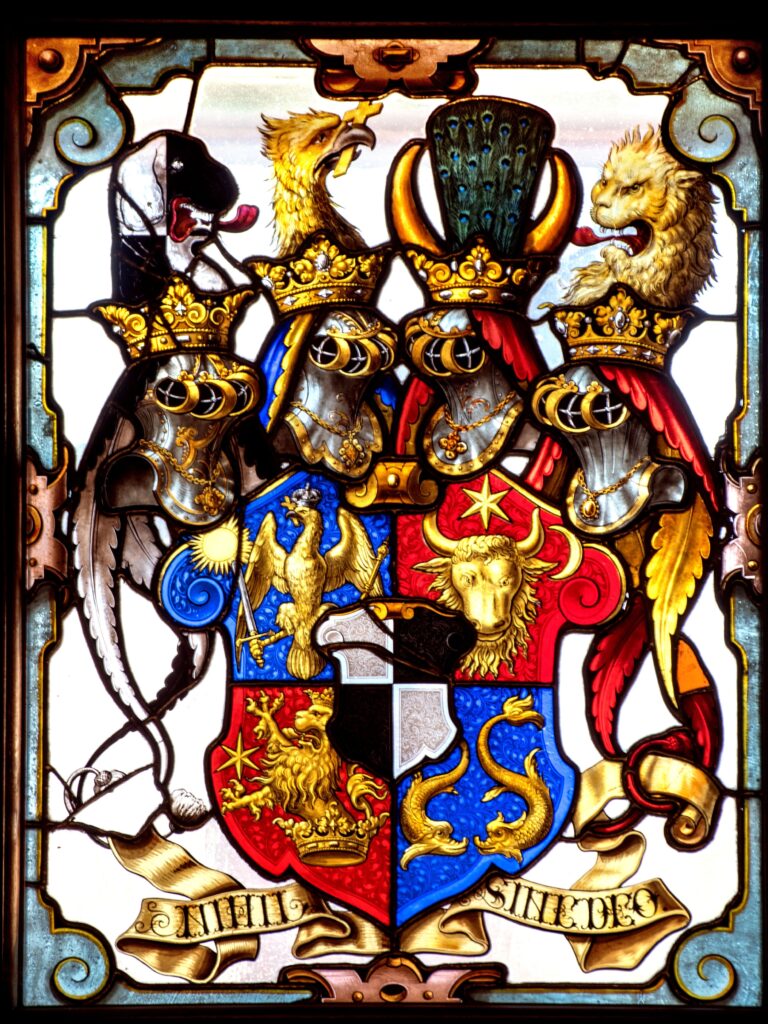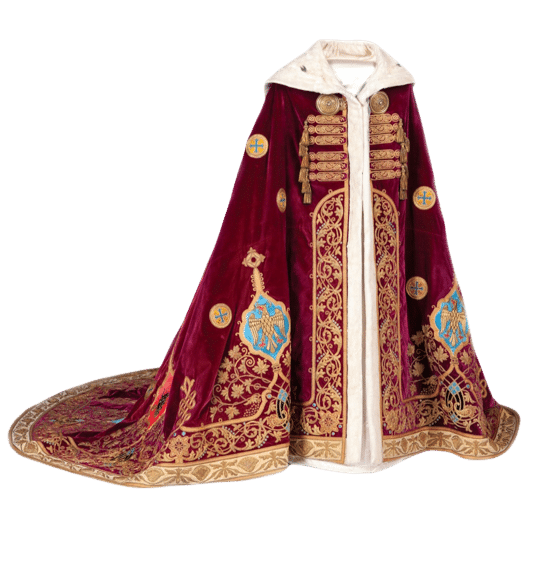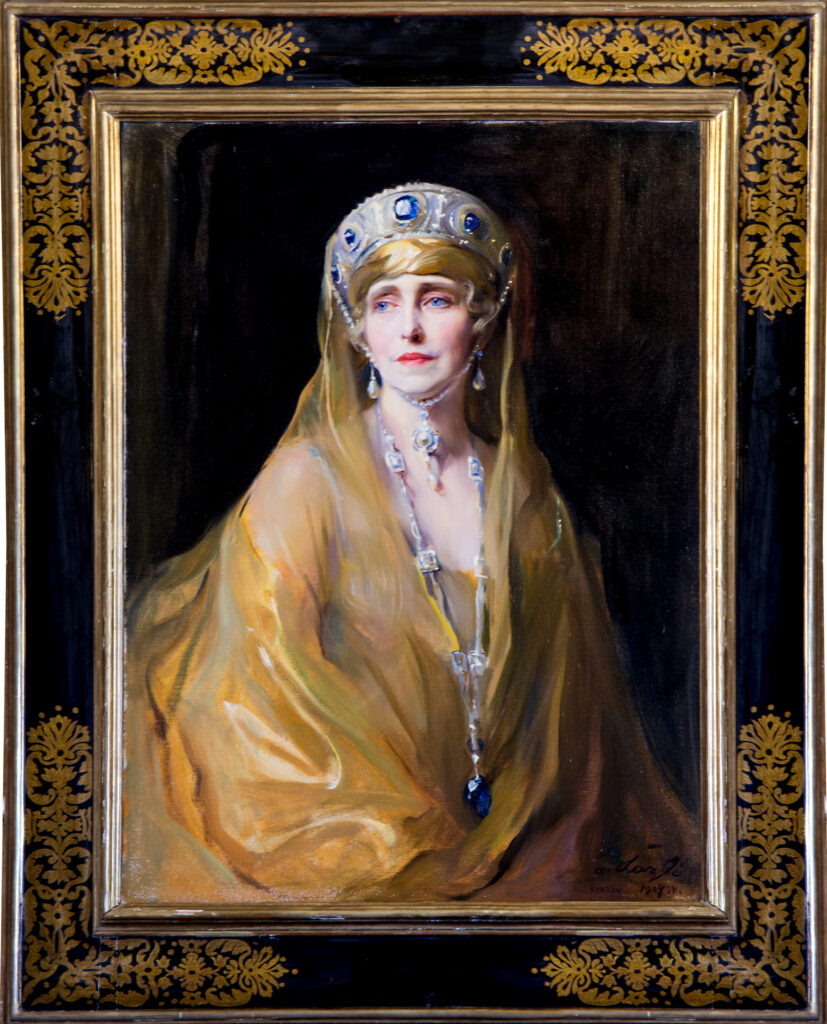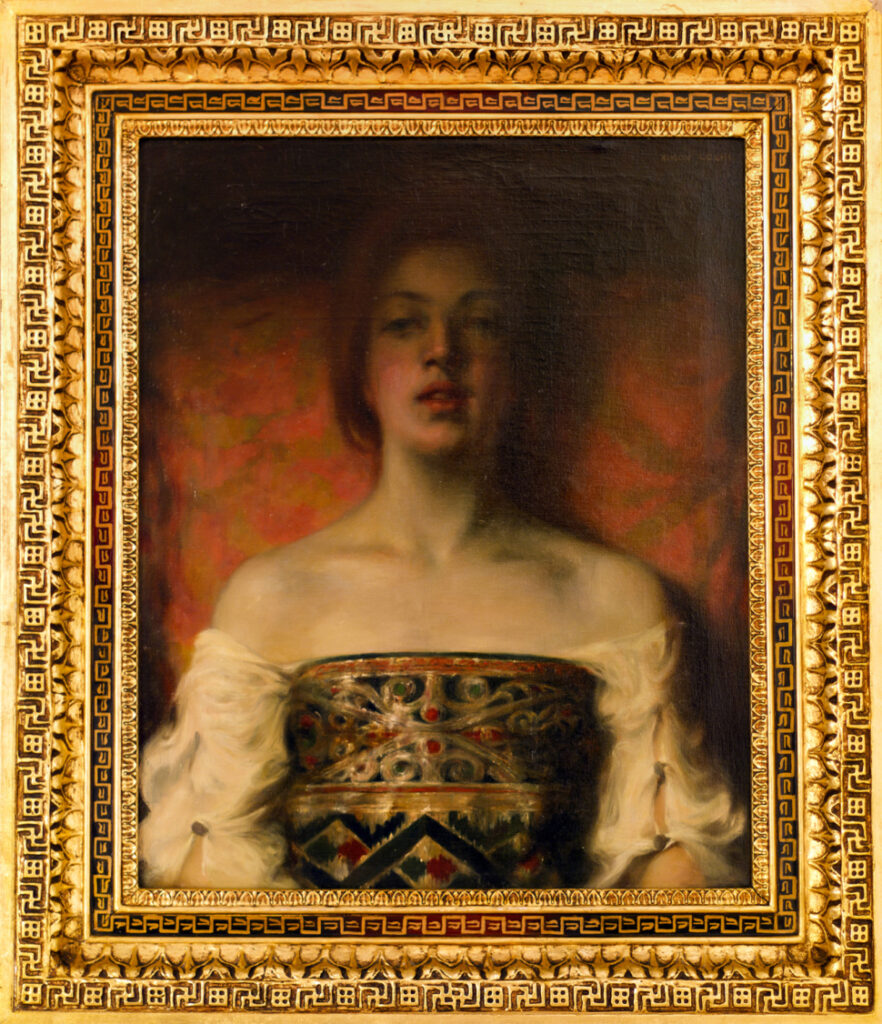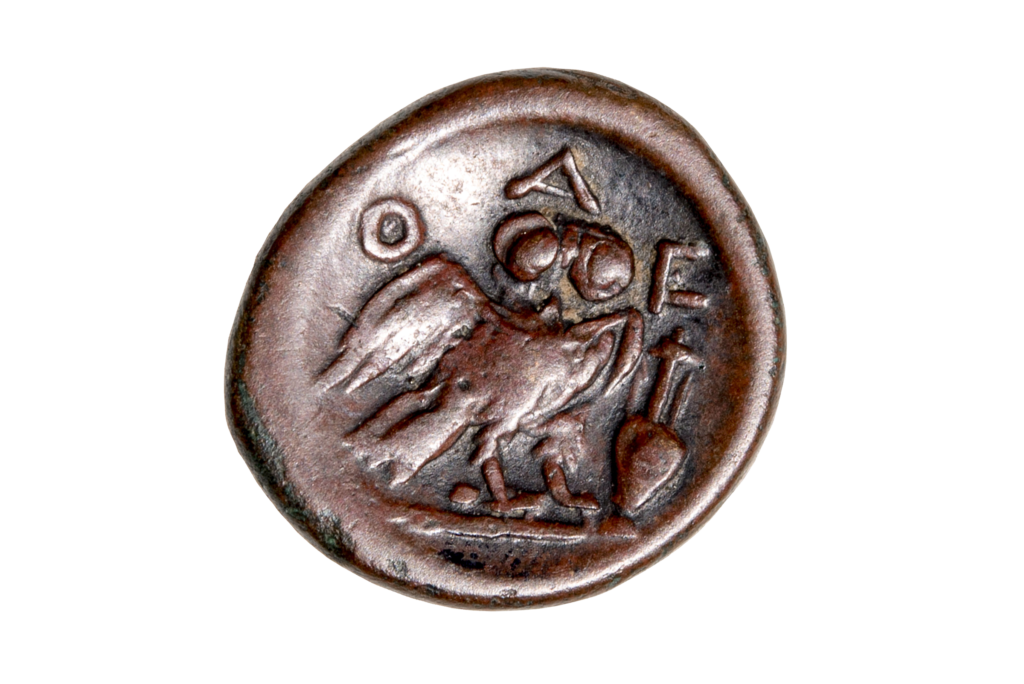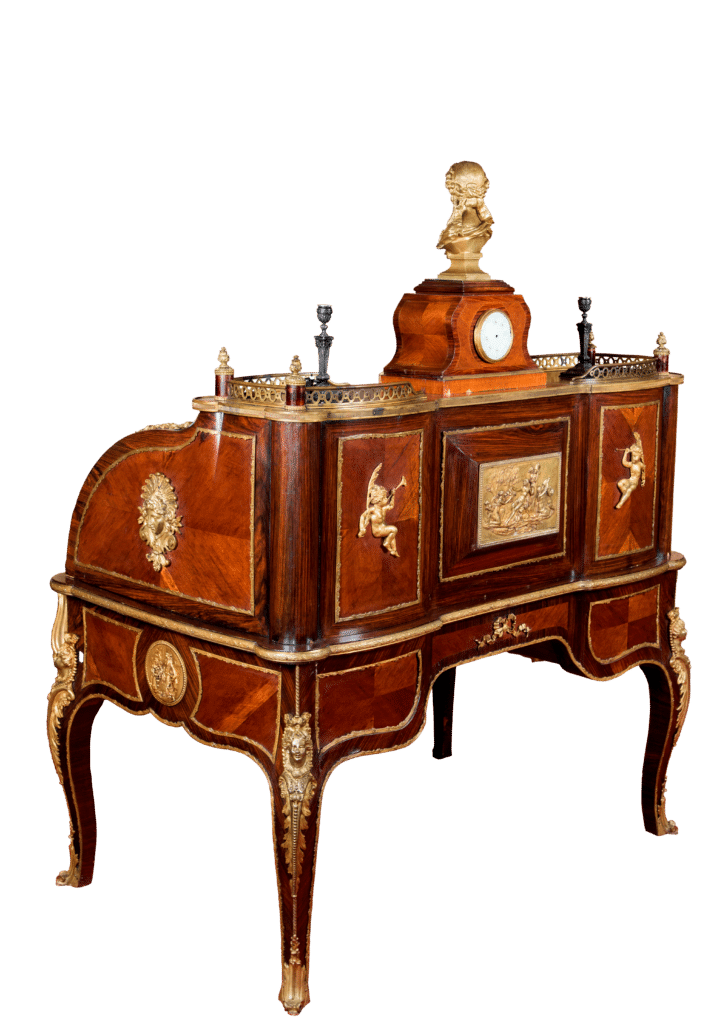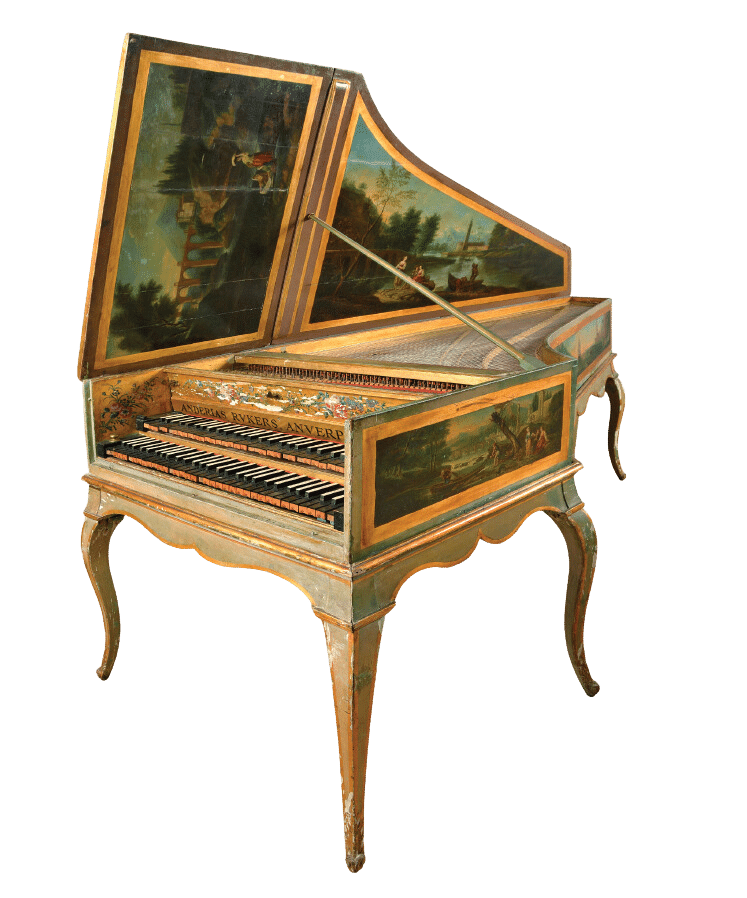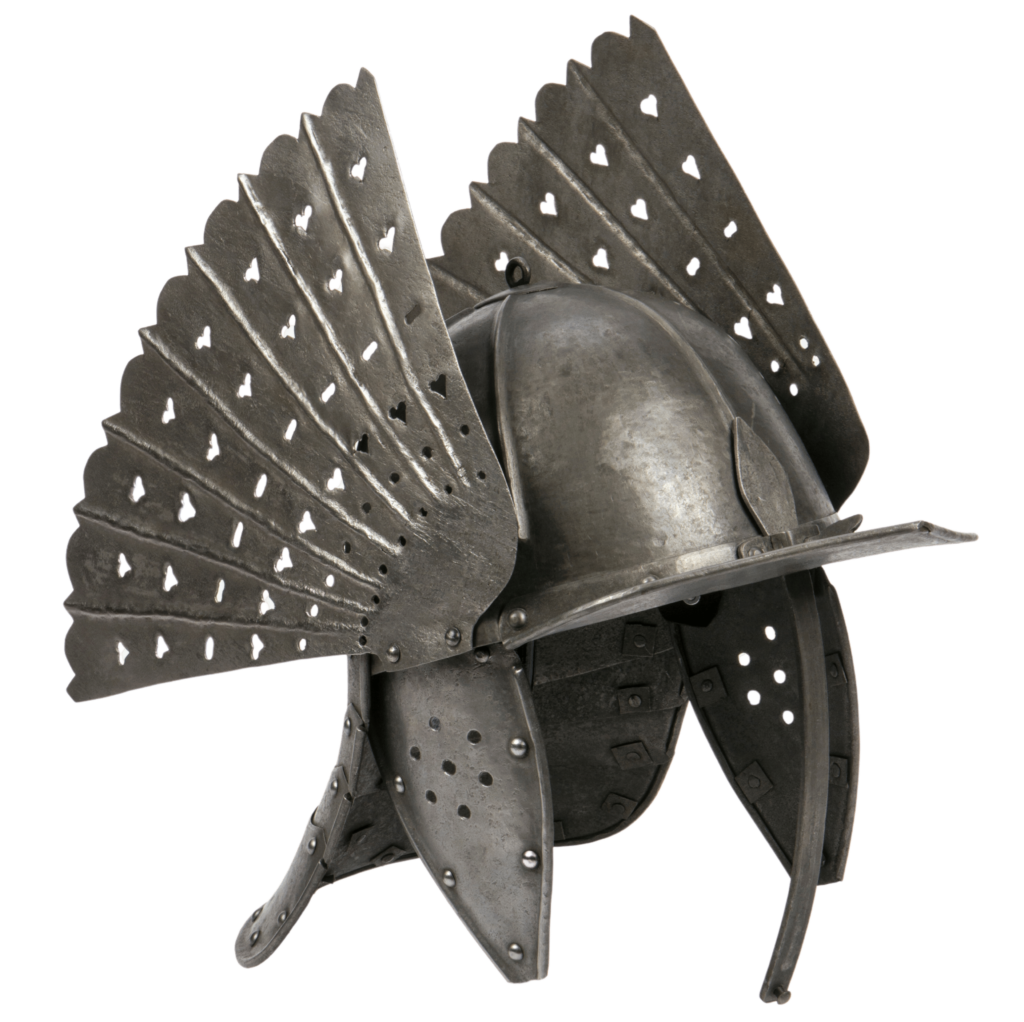Triumphal entry into Rome of Emperor Vespasian and Titus is part of the series of tapestries with a historical subject, "The Conquest of Judea by Vespasian and Titus". The series, consisting of 6 works (2 tapestries and 4 tapestry cartons), was executed in the workshop of Erulo Eroli in Rome, in 1913. The tapestries are part of the wall decoration of the corridor of the Staircase of Honor on the first floor of the castle.
The theme of the 6 pieces, arranged clockwise, represents the events of the First Jewish-Roman War (66-73 AD), in chronological order. Sometimes called the Great Revolt of the Jews, it was one of three major revolts of the Jews in the province of Judea against the Roman Empire. The revolt began in 66 AD, having its origins in tensions between Greeks and religious Jews. The conflict grew due to anti-tax protests and attacks on Roman citizens. In 67 AD, Vespasian was entrusted by Emperor Nero with the task of suppressing the revolt. Two years later he was proclaimed emperor, and his son, Titus, was tasked with taking command of the armies. In August 70 AD, Titus conquered Jerusalem, and in 72-73 AD ended the war in Judea, which was reorganized as an independent province.
Erulo Eroli, Italian painter and tapestry maker, was born on 27 February 1854 and died on 13 December 1916, in Rome. In his youth he had studied fine arts, especially painting, at the Pontifical School in Rome. In the workshop opened by Eroli in 1875, in addition to paintings with religious subjects, he began to create tapestries and preparatory cartoons for tapestries, together with a number of artists from the Pontifical workshops. He would win several prizes from the Italian Ministry of Public Instruction for the works created during his studies.
Throughout his years of study, Eroli increasingly specialized in the tapestry technique. He frequently participated in numerous national and international exhibitions, winning significant awards. His works were acquired by private collectors as well as museums in his native country.
He will participate, in 1883, at the Exposition of Fine Arts in Rome, being the first important appearance of his professional life. A few years later, in 1887, he will be awarded the silver medal for the tapestry exhibited at the Museum of Industrial Art in Rome.
Eroli's activity was very rich and varied, extending across several fields. He was involved in various artistic organizations, such as that of watercolorists, of which he was president between 1907 and 1911. In 1892, he became a member of the International Artistic Association, and in 1903 he was among the founding members of the Union of Italian Artists.
Erulo Eroli worked as a painter, but intensified his activity in the field of tapestry, by recovering traditional processes of creating preparatory cardboards for the execution of tapestries. Starting with 1900, he received large-scale orders in the field of tapestry, the first being the panels for the foyer of the theater in Buenos Aires.
The artist Erulo Eroli's international recognition will only take place in 1891, when he wins the gold medal at the International Exhibition in Antwerp. With the award of this medal, significant orders for tapestries begin. The first important order came from Prince Colonna, the mayor of Rome, for the execution of about 25 tapestries with historical subjects inspired by ancient Rome, to be displayed on the balconies of the town hall and the museums on the Capitol.
King Carol I came into contact with Erulo Eroli through one of the royal suppliers, the Italian Pietro Axerio, who was in charge of designing the interiors of Peleș Castle. The fame and recognition that the artist enjoyed led the King of Romania to entrust him with the execution of a series of tapestries for the summer residence in Sinaia. In 1913, Eroli received the order from the Romanian Royal Administration, the chosen subject being the conquest of Judea by the Romans. The decoration of the tapestries was inspired by the bas-reliefs of the Arch of Titus in Rome, glorifying the brave deeds of the two warriors, Vespasian and Titus.
The tapestry cardboard, painted on cotton rep, in the style of Aubusson tapestries, represents the triumphal entry of Emperor Vespasian and Titus into Rome after the conquest of Jerusalem. The two heroes are in a triumphal chariot, in procession, in front of the Pantheon, being acclaimed by those present. Around them, Roman soldiers carry the objects looted from the Temple of Jerusalem, including the seven-branched gold menorah made by Moses and the sacred table of the 12 loaves. The Temple, which represented the spiritual unity of the Jews, perished in looting and fire, along with the entire city of Jerusalem. All the objects from the temple were taken to Rome to be exhibited during the triumph ceremony in honor of Titus. The entire scene is framed, above and below, by a wide border with a floral-vegetable ribbon and vases of fruit – the symbolism of abundance, and above in the medallion a cartouche with the inscription "HISTORY. TITI. ET. VESPASIANI". The chromatics of the piece are made up of tones of red, colored grays, shades of green and brown.

